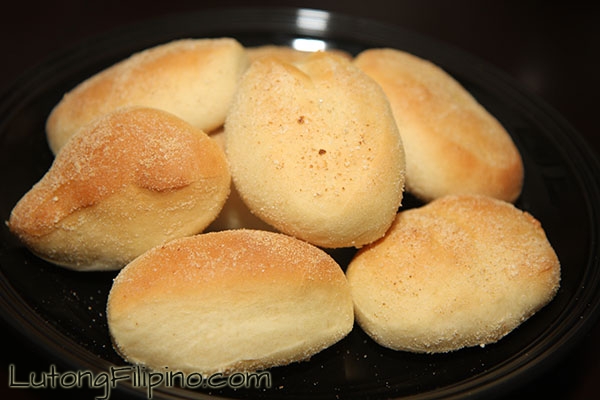Every cuisine has its culture’s take on the classic bread roll. Mexican cuisine has bolillos, Puerto Rico has pan de agua, China has bao zi. In Filipino cuisine, it’s a soft and pillowy roll from Spanish-Era Philippines. Pandesal (from the Spanish pan de sal, “salt bread”) is a yeast-based bread commonly used in Filipino cuisine. It originated in the 1700’s during the Spanish colonization of the country. Today, it is a popular as a breakfast food, a snack, or accompaniment to any dish. Almost all bakeries and bake shops in the Philippines sell this iconic bread. It’s so popular; most neighborhood bakeries sell out before 8 or 9 in the morning. It’s common for bakeries to bake it both the morning and the afternoon to meet the demand.
Oftentimes, rolling stores (on the backs of bicycles or motorcycles) will sell pandesal. Traditionally, it is made with milk, butter, sugar, salt, eggs, and flour. It is kneaded into a soft, springy consistency and then left to rise. Once risen, it is kneaded again then rolled into a log. This log is then cut into pieces and each piece is rolled in breadcrumbs before baking. Contrary to its name, the resulting bread roll is relatively sweet tasting. Pandesal can be enjoyed as a simple breakfast bread (with butter, jam, jelly, or any variety of other spreads), or used in place of any traditional bun (in a sandwich, etc.) Pandesal also freezes very well – they can be stored for up to a month in a freezer bag.
[yumprint-recipe id=’28’]

Leave a Reply